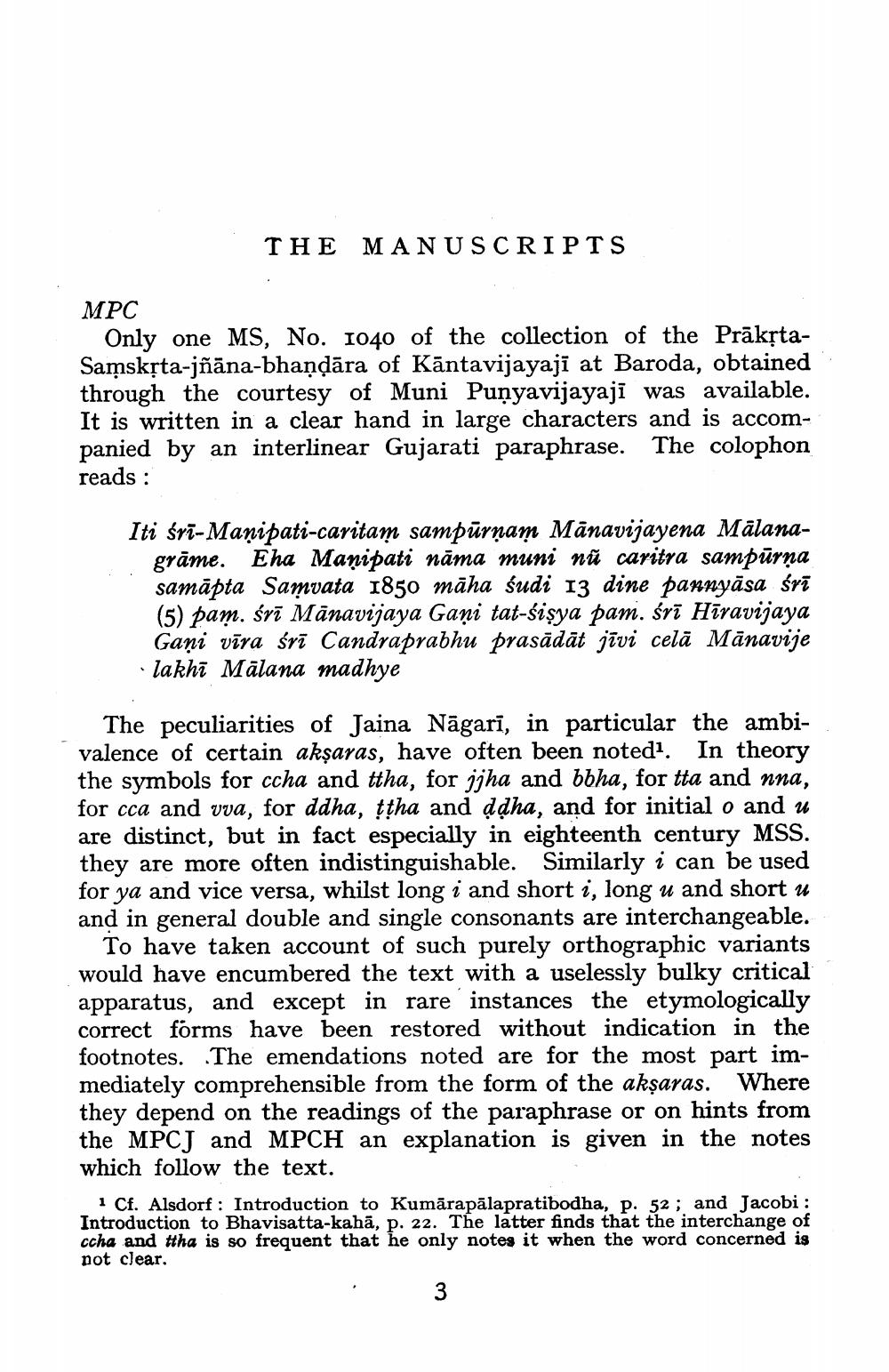________________
THE MANUSCRIPTS
MPC
Only one MS, No. 1040 of the collection of the PrākstaSamskệta-jñāna-bhandāra of Kāntavijayajī at Baroda, obtained through the courtesy of Muni Punyavijayaji was available. It is written in a clear hand in large characters and is accompanied by an interlinear Gujarati paraphrase. The colophon reads :
Iti śrī-Manipati-caritam sampūrņam Mānavijayena Mälana
giãme, Eha Mamibati Mãma Mi Mũ cavitra samp@pa samāpta Samvata 1850 māha śudi 13 dine pannyāsa śrī (5) pam. śrī Mānavijaya Gani tat-śişya pam. Śrī Hīravijaya Gani vīra śrī Candraprabhu prasādāt jīvi celā Mānavije · lakhī Mālana madhye
The peculiarities of Jaina Nāgarī, in particular the ambivalence of certain akşaras, have often been notedi. In theory the symbols for ccha and ttha, for jjha and bbha, for tta and nna, for cca and vva, for ddha, ţtha and ddha, and for initial o and u are distinct, but in fact especially in eighteenth century MSS. they are more often indistinguishable. Similarly i can be used for ya and vice versa, whilst long i and short i, long u and short u and in general double and single consonants are interchangeable. To have taken account of such purely orthographic variants
ve encumbered the text with a uselessly bulky critical
is, and except in rare instances the etymologically correct forms have been restored without indication in the footnotes. The emendations noted are for the most part immediately comprehensible from the form of the akşaras. Where they depend on the readings of the paraphrase or on hints from the MPCJ and MPCH an explanation is given in the notes which follow the text.
1 Cf. Alsdorf: Introduction to Kumārapālapratibodha, p. 52; and Jacobi : Introduction to Bhavisatta-kahā, p. 22. The latter finds that the interchange of ccha and ttha is so frequent that he only notes it when the word concerned is pot clear.




